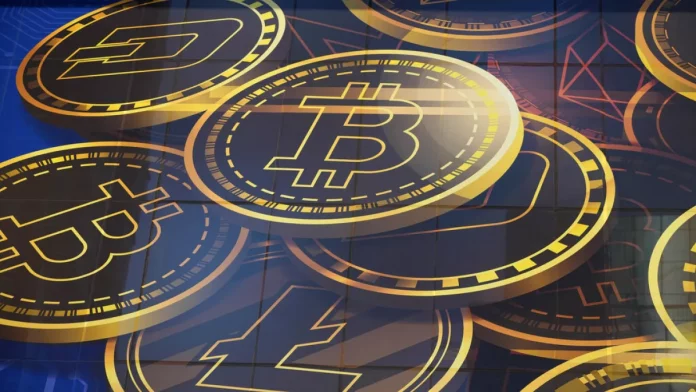Picture this: at one point, you’re paying two large pizzas for 10,000 BTC; at the other, you realize these pizzas you ate are now worth millions more, and now you’re left with a bittersweet feeling. While undoubtedly you enjoyed your pizzas, the potential fortune they represent now stings a little.
In the world of crypto, one day, you’re withdrawing funds from your CEX.IO mobile crypto app to buy lunch for two, while the next, you may be wondering whether to buy an Audi RS 6 or BMW M5 Touring. Indeed, crypto is a double-edged sword; however, that doesn’t mean the potential rewards aren’t worth considering. Crypto offers a chance for significant financial growth, something traditional investments might not.
In this article, we explore the crypto price rollercoaster and the factors that make crypto go up and down.
Supply and Demand as the Core Market Principles
Just like any other tradable asset, the price of a cryptocurrency is directly influenced by two key factors: supply and demand.
When it comes to supply, it refers to the total number of coins (or tokens) in circulation or, at least, readily available for purchase. For example, Bitcoin has a fixed (capped) supply of 21 million BTC. Other cryptos might have an ongoing issuance schedule.
However, one reason Bitcoin is the most valuable cryptocurrency by market cap is its scarcity. Its limited supply can drive the price higher, especially if demand remains strong.
Demand, on the other hand, represents the willingness of investors (crypto enthusiasts in this case) to purchase a particular digital asset. This can be influenced by several factors, including:
- Perceived usefulness of the cryptocurrency
- Functionality of the underlying blockchain technology
- Overall market sentiment
A common rule of thumb is as follows: When there are more buyers than sellers, driving up demand, the price of a cryptocurrency tends to rise.
Because of that, it is vital to catch the right moment and snap your crypto under favorable market conditions. The best way to seize an opportunity is to buy crypto with a mobile app, which allows you to acquire digital assets smoothly and swiftly without risk missing out on the opportunity.
Scarcity of Bitcoin
We’ve touched on this subject in the above section, but here, we want to emphasize this interplay between supply and demand. Bitcoin, the granddaddy of cryptocurrencies (figuratively speaking), has a predetermined maximum supply of 21 million coins, which plays a crucial role in its value proposition.
As more and more coins are mined, the rate at which new Bitcoins are introduced gradually slows down. This creates a scenario where, theoretically, demand for a limited resource could continue to rise over time, pushing prices higher (look under Bitcoin halving).
The Power of Perception: Market Sentiment and Crypto Prices
The cryptocurrency market is heavily influenced by the collective mood of investors, also referred to as market sentiment. Positive news surrounding a particular cryptocurrency or blockchain technology can trigger a surge in demand, driving prices upwards.
Conversely, negative press or security breaches can lead to a loss of confidence, causing investors to sell their holdings and causing price drops. A good example of such an event is the U.S. Securities and Exchange Commission (SEC) allegations against XRP.
The SEC filed a lawsuit against Ripple Labs Inc., the company behind the cryptocurrency XRP, in December 2020, alleging that Ripple had conducted an unregistered securities offering by selling XRP tokens, which they considered to be securities, and that Ripple’s executives had engaged in illegal securities offerings and sales.
The lawsuit had significant implications for XRP buyers and the broader cryptocurrency market. As a result, its market cap dropped to $24.66 billion, from the previous $42.89 billion recorded on July 14, a day after the SEC ruling.
Social Media Mania and the FOMO Factor
Social media plays a growing role in shaping market sentiment. Endorsements from celebrities or influencers can ignite buying frenzies, while critical tweets or online discussions can spark fear of missing out (FOMO) and lead to panic selling.
Because of that, it is crucial for investors to maintain a level head and conduct their own research before making investment decisions based solely on social media hype. You don’t have to react to every Elon Musk tweet. And also, remember, when you hear the news from social or mainstream media, it’s already too late.
Regulation’s Impact: A Two-Sided Coin
Another factor that can significantly impact cryptocurrency prices is government regulation. While these can bring a sense of legitimacy to the market and attract institutional investors, they can also create uncertainty and hinder innovation.
Stringent regulations can limit access to cryptocurrency exchanges or impose new compliance hurdles, potentially dampening investor enthusiasm and leading to price drops.
In 2021, China banned Initial Coin Offerings (ICOs) as an illegal fundraising mechanism. This intervention altered the structural relationship of not only the Chinese but also the worldwide crypto market, causing panic selling from countless crypto holders.
Crypto Competition
The cryptocurrency space is a dynamic ecosystem and a breeding ground for innovation. New projects and tokens constantly emerge, and competition within the landscape can be fierce, with each project vying for investor attention and market share.
The success and adoption of a particular cryptocurrency, especially from established companies and well-respected investors, can directly impact the prices of its competitors.
Conclusion
The story of the two pizzas bought with 10,000 BTC perfectly illustrates the volatility of cryptocurrency. The price you pay for that lunch could be a fortune tomorrow – or vice versa.
Crypto’s wild swings in Texas style are driven by supply and demand, market sentiment, regulations, and competition.
Understanding these factors is crucial for navigating the exciting but unpredictable crypto rollercoaster. However, remember that this is a new asset class with inherent risks. Do your own research before investing.



































